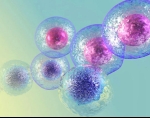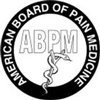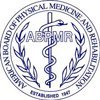Home »
Blog » Pain Management
| Stem Cell, PRP, Acupuncture in Queens & Long Island, New York
Pain Management | Stem Cell, PRP, Acupuncture in Queens & Long Island, New York
It is accepted that the cartilage in our joints does not have the ability to heal itself due to lack of blood supply. Currently, there are not many effective treatments for cartilage regeneration. Stem cells may be an answer. A recent Phase III clinical trial at the Medical Center for Translational Research (MTR) of Osaka University looks into the effectiveness of stem cells in regenerating cartilage tissues.
Read more
Over the years, regenerative stem cell therapy has proven to be the most effective alternative to surgery, cortisone steroid injections or simple physical therapy. There has been a lot of clinical research that confirms the effectiveness of this treatment. The most significant feature of this form of treatment is that it offers patients relief from chronic pain and difficulty to heal injuries. The healing is carried out without the use of any medications or risky reconstructive surgeries. These days, researchers are also discovering ways to use this form of treatment for common chronic conditions such as heart disease, neurodegenerative disease, and diabetes.
Read more
Stem cell therapy uses a patient’s own stem cells to help repair damaged tissues and repair injuries. This therapy is a part of the regenerative medicine field that is rapidly growing. A few of the many things stem cell therapy is used for include reducing joint pain, increasing motion and flexibility, and treating tendon and ligament tears.
Read more
PRP is short for Platelet Rich Plasma. PRP is blood plasma with concentrated platelets. The concentrated platelets found in PRP contain huge reservoirs of bioactive proteins, including growth factors that are vital to initiate and accelerate tissue repair and regeneration. These bioactive proteins initiate connective tissue healing, bone regeneration, and repair, promote the development of new blood vessels and stimulate the wound healing process.
Read more
Stem cell injections are being used to treat various conditions pertaining to knee, shoulders or back. There are several myths surrounding the treatment that you need to be aware of. The therapy has helped thousands of patients overcome insufferable pain. They are said to find relief of some sort almost instantaneously after the very first session. And, if one keeps at it, they can hope to find permanent relief from the pain they are going through
Read more
We provide you with the opportunity to learn more about regenerative medicine with free educational blogs. We focus on educating those who want to have an option for pain relief from chronic pain without prescriptions, painkillers or invasive surgery. As you may know, regenerative therapy is an innovative, cutting-edge approach, which may allow you to once again live your life to the fullest.
Read more
The stem cells found in bone marrow are what are called resting stem cells and do not reproduce or regenerate until “programmed” to. This flexible function of it is what allows it to be an effective treatment when it comes to combating illness. Even though they do not reproduce on their own, they are capable of responding to stress signals like loss of blood, oxygen depravity etc. This hematopoietic cell is a parent to most of the blood cells found in the human body. These cells, in turn, make way for the mature blood cells that are found in the human body. Circulating blood consists of cells, which are further divided into polymorphonuclear cells (cells which survive for a day or two), erythrocytes (which survive for months), lymphocytes (which survive from days to years).
Read more
Please find 10 daily habits below which can ease your chronic pain:
1. Exercise, 2. Practice Relaxation, 3. Avoid Alcohol, 4. Quit Smoking, 5. Eat Well, 6. Journal, 7. Give Yourself Down Time, 8. Distract Yourself, 9. Know Your Medicines, 10. Ask for Help
Read more
Just about everyone feels pain from time to time. When you cut your finger or pull a muscle, pain is your body's way of telling you something is wrong. Once the injury heals, you stop hurting. Chronic pain is different. Your body keeps hurting for weeks, months, or even years after the injury. Doctors often define chronic pain as any pain that lasts for 3 to 6 months or more.
Read more
Whether you’re strolling the aisles of your local drugstore or clicking around online, it’s easy to find braces meant to support your neck, back, ankle, wrist, and other joints. Should you try them? It depends. In most cases, it’s best to see your doctor first. If you use them wrong, or they don't fit the way they should, braces may do more harm than good.
Read more
Love this Post? Spread the World
























